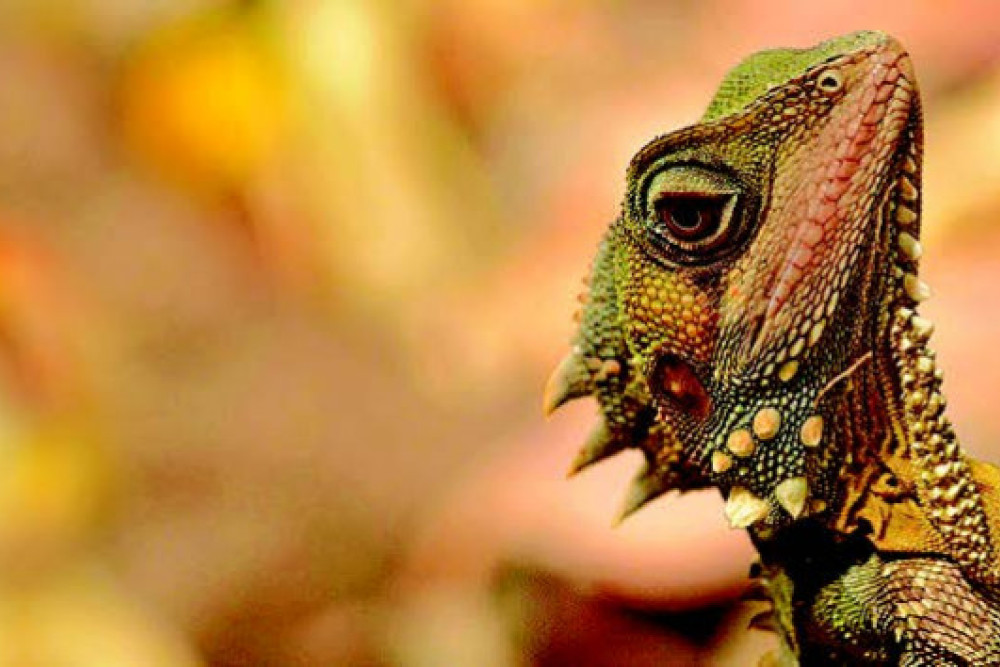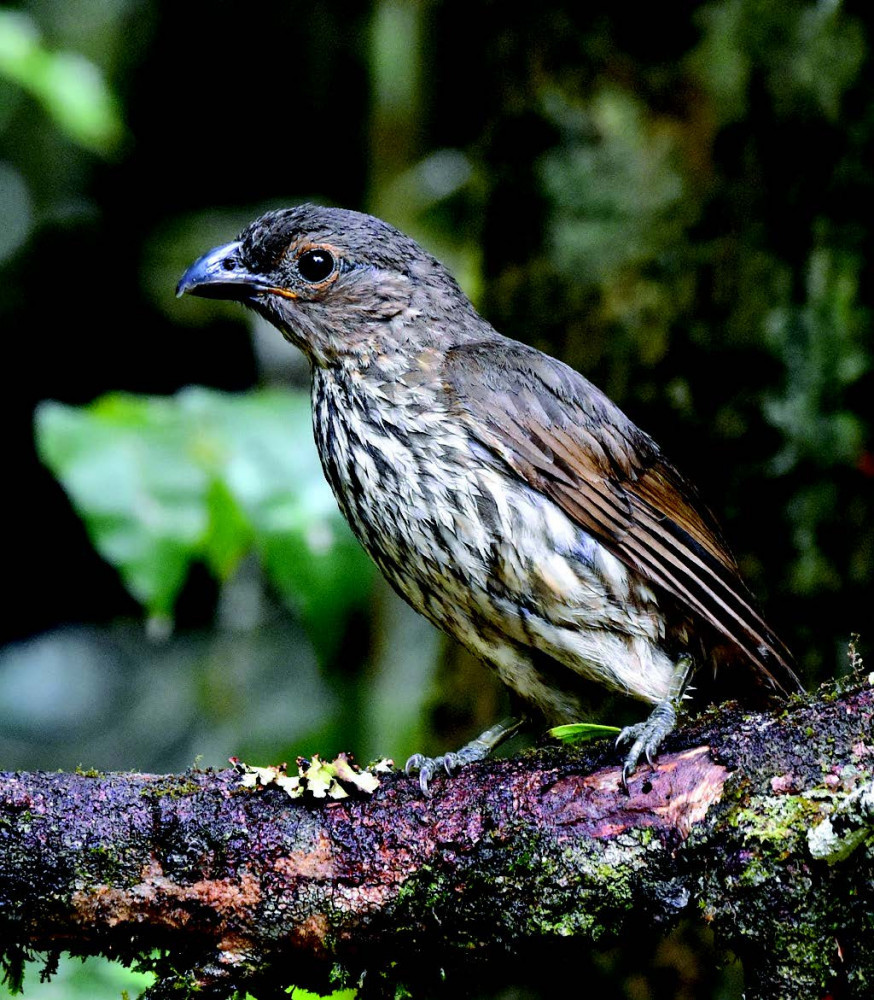Community & Business
10 December, 2021
An Australian rainforest songbird at risk
MOST of us have heard the expression “scarce as hen’s teeth” and appreciate that this reflects the fact that chickens (and other birds) do not have teeth.

What then are we to make of the northern Queensland rainforest endemic bird called the Tooth-billed Bowerbird?
It is true that these birds do not have real teeth but seen close up their bills have serrations that perform the role of teeth and help them cut through plant leaves, an important part of their diet.
Males also use their bills to cut leaves that they use to make their courts, a carefully placed set of leaves on a cleared patch of the forest floor.
As with the more substantial bowers of other species of bowerbird, these courts are used to seduce females, as is the stunning song of the male.
Like other bowerbirds, male Tooth-billed Bowerbirds often steal the leafy decorations from nearby courts of rivals.
Tooth-billed Bowerbirds are upland birds with most occurring above 700 metres and with some populations well over 1000 metres above sea level.
They are found between Shipton’s Flat (just south of Cooktown) all the way to Paluma in the southern part of the Wet Tropics and most recently found by Mareeba resident Dominic Chaplin on Mt Elliot just south of Townsville.
They are considered to be near threatened even though almost the entire population is within protected areas (the Wet Tropics World Heritage Area) but concern exists for potential impacts from the effects of climate change.
This is due to potentially hotter conditions (direct impact) and the likelihood of more frequent droughts and greater intensity of cyclones.

But how can we monitor these birds as they are reclusive, often shy, and live within the tropical rainforests?
Luckily there is one part of the year where they are easily found and that is between October and December when the males set up their courts and sing loudly throughout the day, usually from a perch just above their courts.
The calls are extremely rowdy and the bird will mimic many other calls including 44 different species of birds, but also frogs, fruit-bats, crickets and cicadas.
During the breeding season, a male will call from cover at times but also from a perch near his court.
They might call continuously for long periods of time and that makes it relatively easy to record the presence or absence of breeding males.
Further complications can arise because of their use of ventriloquy.
Members of BirdLife Northern Queensland, under the leadership of Dom Chaplin, spend time each spring and early summer monitoring many known sites for this species, to establish a good quality baseline of the active population.
This will form part of the long-term monitoring to measure the effects of climate change on the density, distribution and population of Toothbilled Bowerbirds.
It may be a cryptic species in its plumage, but this species is one of the most potent singers of the rainforest and will likely be a good indicator species to monitor change. Let’s hope it never gets as scarce as hen’s teeth.
Peter Valentine is an adjunct Professor at James Cook University and he has spent much of the past 40 years studying wildlife in northern Queensland. He is currently President of the Tree Kangaroo and Mammal Group and Conservation Officer for BirdLife Australia Northern Queensland Branch. He is also an Editor of the North Queensland Naturalist journal.



